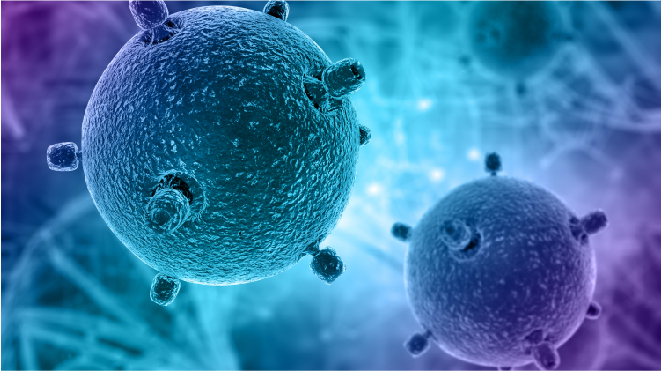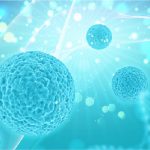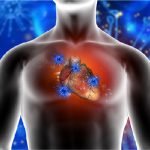The treatment for blood cancer depends on the type and stage of cancer, age of the patient, the surrounding organs, and the tolerance of the patient among other factors.

The most important treatments for curing blood cancer are:
1.Chemotherapy:
Chemotherapy for blood cancer is a form of chemical drug therapy that aims to destroy the rapidly growing cells in the body. It is one of the most reliable treatments to cure blood cancer.
Procedure:
In this method, the medical oncologist injects the drugs into the veins or the larger muscle. Depending on the stage of the treatment, medical oncologist may prescribe either oral consumption or intravenous injections. These drugs travel along the bloodstream to reach the cancer cells. They then restrict the cells from spreading the cancer further in the body. This treatment becomes one of the most effective one because these drugs attack the cancer cells that are dividing quickly. Generally, doctors prescribe chemo in stages. After every stage of treatment, the patient is given a period of rest. This is so that the patient can handle the side effects of treatment. Nonetheless, other other drugs may help manage side effects.
Side effects:
Heart, liver, brain, kidneys, testicles and ovaries are susceptible to damage because of this treatment. Common side effects include:
- Easy bleeding and bruising
- Anemia
- Nausea and vomiting
- Hair loss
- Fatigue
- Appetite changes
- Constipation
The oncologist should take care of the tolerance levels of the person before proceeding with the treatment. There should be strict medical invigilance during the treatment. In case of side effects, doctors prescribe relevant palliative medication to manage them. Treatment needs to stop if any side effects are severe. However, the side effects are short-termed and your healthcares team prescribes precise medication post-treatment.
2. Radiation Therapy:
Radiation therapy or radiotherapy for blood cancer uses high energy radiation to kill the cancer cells. The therapy works by damaging the DNA in the cells, which restricts their growth and reproduction.
Types of radiotherapy:
There are two types of radiation therapies:
- Internal Radiation: Internal radiation therapy treats cancers of the head and neck, breast, cervix, prostate, and eye.
- External Beam Radiation: This is the most common type of radiation therapy used. Doctors prefer this technique for the treatment of blood cancers.
Procedure:
In external beam radiation, your radiation oncologist delivers a focused beam of radiation externally by a machine called linear accelerator or linac. The linac moves around the body in various angles to deliver the radiation. These accelerators benefit targeted radiation which lessens the scatter of radiation to non-cancerous tissues. During the treatment, the skin needs protection from reactions. Moreover, the patient needs to stay still and not move. No pain occurs during the treatment. Shields help protect the sensitive parts of the body from the radiation.
Side effects:
The side effects generally depend on the intensity of radiation, tolerance of the patient and the area that receives radiation.
The common effects include:
- skin problems
- sore throat
- hair loss
- nausea
- vomiting
- heartburn
A radiation oncologist prescribes the dose of radiation. It depends on the age and medical history of the patient. The pratient’s tolerance level is also an important factor for deciding the dosage of the treatment.
Before the radiation, the patients undergo simulation, where the technician determines the most effective way to direct radiation and the angles of direction. Radiation is delivered over a several weeks to reduce its side effects.
Post-treatment, the patients have to take a nutritious diet which can help them cope up with the side-effects and help in building healthy tissues. Maintenance of body weight, energy and regular exercises also contribute to the benefits of the patient’s health.
3. Stem Cell Transplantation:
Cells of the bone marrow are stem cells. They develop further to form different types of blood cells. When the blood cells are critically affected and the functioning of the body declines, the body needs needs to get rid of more cancerous cells. Additionally, the treatments to destroy cancer, stem cell or bone marrow transplantation may be needed.
Procedure:
Before a stem cell transplant, the patient is given a conditioning regime, called engraftment. This treatment involves the elimination of cancer cells in the body, for which the patient undergoes high levels of chemotherapy and in very few cases, radiotherapy as well under strict monitoring. This prepares the body for stem cell transplantation.
The stem cells are injected through the veins. These cells travel across the blood and reach the bone marrow to make new blood cells.
The stem cell transplant procedure would generally take an hour.
Side Effects and care to be taken:
Common side effects include:
- mouth and throat pain
- bleeding and transfusions
- interstitial pneumonitis
- nausea and vomiting
Post transplantation, the patient’s blood count needs regular monitoring. In some cases, the patient might require blood cells and platelet transfusion. Furthermore, additional drugs are given to prevent infections and other issues in case the stem cells donors provide the stem cells.
4. Blood Targeted Therapy:
These therapies particularly target the specific molecules that help the cancer to grow and spread across the body. Primarily, the aim is to target the genes, proteins and supporting blood vessels. Doctors prescribe solitary treatment or in combination with chemotherapy. Depending on the type of blood cancer and the characteristics of the cancer cells, the following are the major options:
- Monoclonal Antibodies: Monoclonal antibodies are man-made versions of immune system proteins. They attach to the surface of the cancer cells with the objective of reacting to the cancer cells and helping the immune system destroy them. Your medical oncologist prescribes monoclonal antibodies with chemotherapy for chronic blood cancer. Additionally, major side effects of this therapy include chest pain, heart-racing, swelling, cough, trouble in breathing and severe dizziness.
- Tyrosine kinase inhibitors: TKIs are a specific type of targeted therapy consisting of pills for oral consumption. They identify and kill cancer cells while preserving healthy cells. The patient may attain treatment-free remission if the drug is discontinued and they maintain a major molecular response (MMR).
- Interferon: Generally, the immune system naturally produces interferons in our body. The therapy involves drugs that mimic this effect and was previously one of the most effective treatments. These drugs restrict the growth and division of blood cancer cells. Usually, treatment could continue for a few years. The patients have to deal with the side effects during treatment, however, they can cope easily post therapy.
Common side effects:
Generally, the side effects of the blood targeted therapies are:
- Skin problems
- Problems with blood clotting and wound healing
- Increasing blood pressure
- Gastrointestinal perforation



